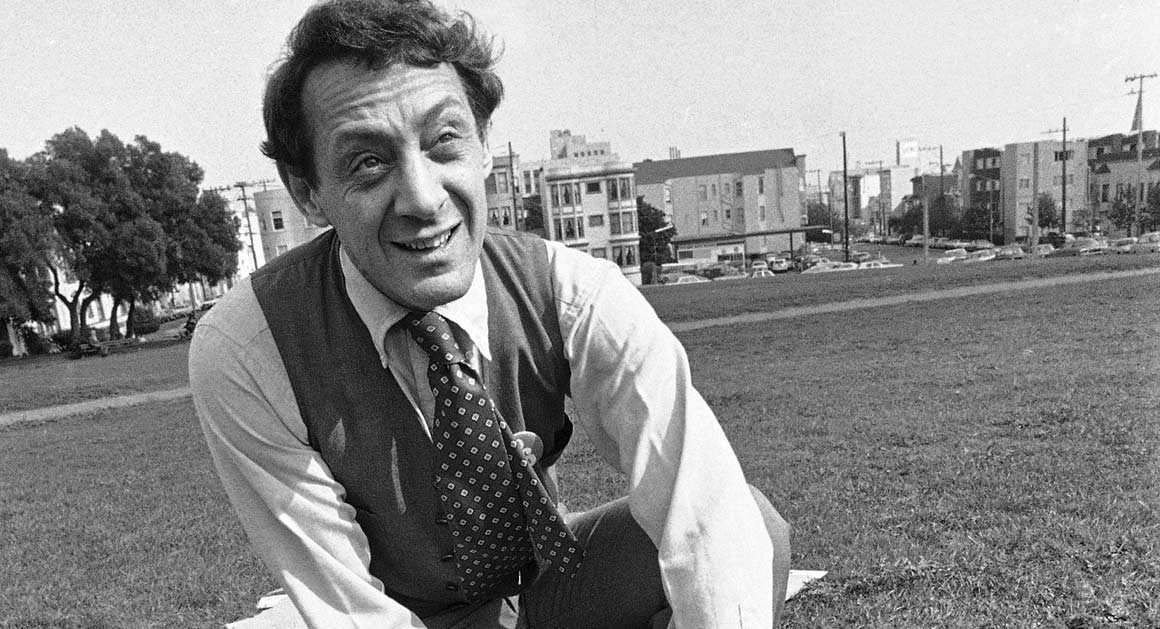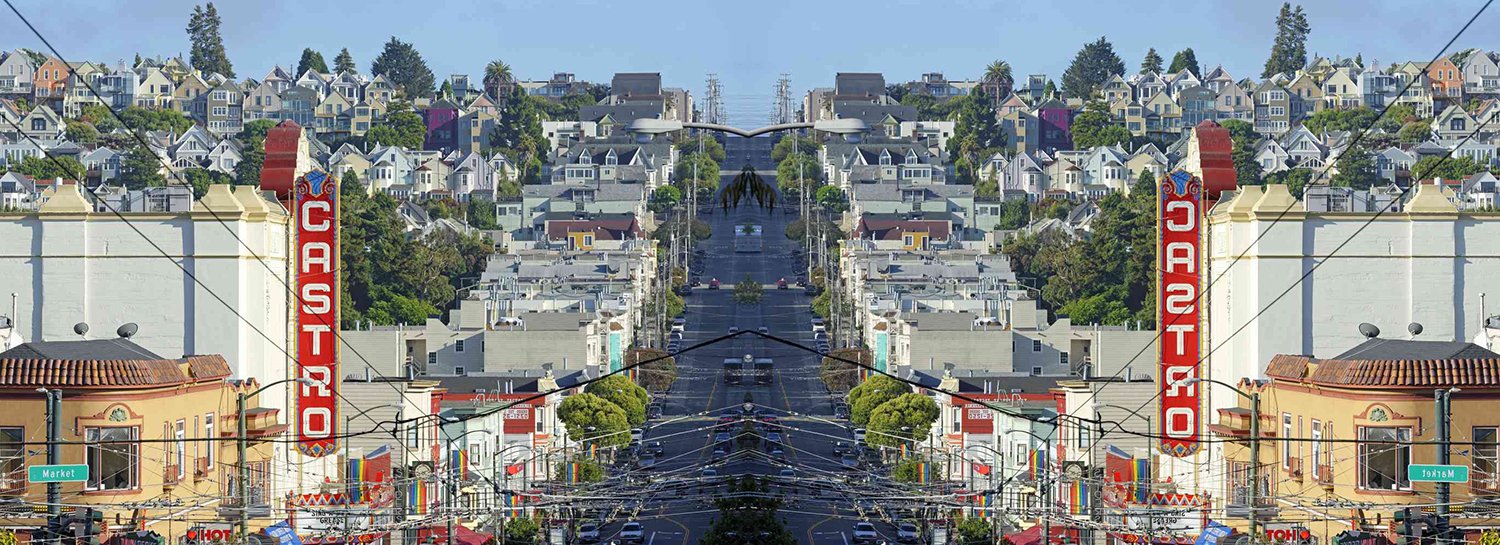
Mission, Goals
and History
EVNA Mission
The Eureka Valley Neighborhood Association (EVNA) is the oldest official Neighborhood Association in San Francisco. Formed in 1881 as the Eureka Valley Promotion Association (EVPA), we provide a public forum for the people who live, work, and play in the greater Eureka Valley area to discuss common issues and concerns and help develop solutions to improve our neighborhood. Read our recently updated bylaws here.
EVNA Goals:
Protect and enhance the character of the neighborhood, its historic resources and significant topographic features and open space
Ensure that growth, development, and public access are compatible with and meet the needs of residents and the business community
Protect and improve public health and safety
Encourage friendly association among neighbors and businesses
Provide an educational forum and community outreach to community partners
History of the EVNA
By Bonnie McGregor, SF City Guides and EVNA Member
Above Harvey Milk Plaza, standing under the largest flag in San Francisco, 20' by 30', the creative work of Castro Artist, Gilbert Baker, one begins to understand the unique neighborhood once called Irish Hill, universally known as "The Castro.” Known to locals as Eureka Valley, its roots are complex with: Native Americans, Scandinavian dairy farms, the hard-scrabble Irish immigrants, Gay migration, revolution, an historical election, assassination, the Aids epidemic and notorious aftermath...
There's gold in them there hills! The word rang out, they came by the hundreds of thousands. 2.5 million Irish left their homeland at the turn of the century, and before for the coveted gold. About 30% came to San Francisco and perhaps 29% of the 30% arrived in Eureka Valley. They worked hard, saved their meager salaries and built a spiritual refuge on Diamond Street: the Most Holy Redeemer Church. The Irish enclave sent the women to the wealthy neighborhoods to cook, clean, and provide child care. The men became our first fire and police professionals while employing long held skills in construction.
Guided by Catholic faith their world upended when a gay city migration began in the late 1960s. With the Summer of Love turning loveless, gay men relocated from the Haight and Polk districts. The neighborhood was in flux, another population shift was at play with Irish moving over the Twin Peaks hill looking for bigger lots, modern homes, ocean breeze and distance from encroaching diversity. As more gay men found a home in the Castro, more Irish moved elsewhere.
Enter Harvey Milk. With a collection of qualities meant for the moment. Working on the business of the touring company of Hair, he and his partner discovered the magic of San Francisco and made their way to the Castro. They leased a space at 575 Castro St. and opened a camera store, a ruse for Harveys burgeoning political ambitions.
Milk began holding court with rhetoric around civil rights for gay people. Clearly a new exciting language, the camera store filled with a community hungry to hear Milk's voice. As time passed Milk founded a business organization for gay people, continued his Gay Rights campaign - he was dubbed the "Mayor of Castro St."
Multiple election campaigns ensued; finally in the Fall of 1977 Harvey Milk was elected to the San Francisco Board of Supervisors, the first openly gay politician elected in the State of California.
Milk's time in office was productive with the introduction and passage of laws for public accommodation and the infamous "pooper scooper law." Milk's time in office was tragically cut short when he and Mayor George Moscone were assassinated in their offices in City Hall on November 27, 1978 by Dan White. That night, 50,000 San Franciscans walked silently to City Hall with lit candles to mourn their deaths.
Dan White, a previous San Francisco Supervisor, Police Officer, and Fireman was tried for the premeditated murders and convicted of manslaughter receiving a 7-year sentence. His cunning attorney crafted a successful defense which was embraced by the jury which had not one gay juror. The ludacris defense suggested that White was so impoverished with his $9,600 a year Supervisor salary that he was forced to have a diet of cheap, sugary pastry, the "Twinkie Defense" was born.
Milk's cremains were mixed with purple Kool Aid, an homage to the Jim Jones and the People's Temple mass suicide in the jungle of Guyana, Milk’s friends also said he would want to be colorful. His ashes were strewn beyond the Golden Gate Bridge. A memorial is encased at the Columbarium in San Francisco near Geary Street. Harvey Milk foretold his death, following just 46 weeks in office his life was taken and the entire arc of the LGBTQ movement was changed forever.
The jury decision outraged San Francisco, but particularly the gay community, resulting in the White Night Riot. 12 police cars were set on fire and serious damage to City Hall was sustained. When the riot dispersed, Police, having removed their uniforms, converged on the Castro. The windows of what is now Harvey’s Bar and Restaurant were smashed with scores of gay men and others transported to hospital emergency rooms. San Francisco's gay population was under siege; many chose to wear whistles around their necks in an effort to remain safe from others who would harm them.
The Most Holy Redeemer Parish played host to a story of neighborhood humanity. With many Irish families relocating to San Francisco's western neighborhoods, the Castro was slowly bereft of its Church families. With a meager collection plate, the Archdiocese handed the reins to a Jesuit Priest, Father Tony McGuire. Father McGuire found sparsely occupied pews populated by the older Irish Women whose families had moved on. Compelled to find his flock, the audacious McGuire donned his best vestments and began walking the neighborhood inviting the gay men to join him in a spiritual journey. Initially skeptical Father McGuire won the day with his authentic outreach, soon the pews filled with men seeking kindness and community, elderly women had men to carry their groceries and cook for. The “Gays and the Grays” forged new families as Neighborhood humanity unfolded.
It was July 1, 1981 when the first AIDS patient presented at San Francisco General Hospital. Thus began a decade plus of unrelenting tragedy in San Francisco's Castro neighborhood. in 1981, 9 men died in San Francisco of AIDS; by the following year, 30 men were dying every week. The first AIDS hospice in the nation was born on Diamond St. across from the Most Holy Redeemer Church where Father McGuire was attending to the carnage with scores of funerals, endless loss and unbearable grief. The current Walgreens Pharmacy housed the Star Pharmacy, where young men would post photos of the lesions on their skin in the windows to warn the imperiled neighborhood. Obituaries began appearing on the Bank of America grill work across the street, and continue to this day. The AIDS epidemic engulfed the Castro, a 10 block radius swallowed the lives of thousands; since its onset 25,000 San Franciscans have perished.
Our own Castro resident, Cleve Jones is the Man behind the Movement, he is responsible for the AIDS Memorial Quilt. Mentored by Harvey Milk as a 15-year-old, Cleve Jones has spent his life as an activist in the Gay Rights Movement. His story, showcased in the ABC miniseries When We Rise, brings the story of the Castro and its queer community to life. "People need to know they are not powerless. They can rise up and fight for good." -Cleve Jones. Catch, the popular seafood restaurant on Market Street, features pieces of the powerful quilt.
The Historic Castro Theater was born of a Syrian refugee family coming to San Francisco for a better life. They created the jewel in the Castro crown when they hired fledgling Architect Timothy Pflueger to design their movie palace on Castro Street in 1922. A Spanish Colonial Baroque facade with an ornate interior features a leather ceiling. The Castro Theatre is an icon of the LGBTQ community, a treasured movie palace for music, live performances and film.
Today's Castro is experiencing a slow but steady rebuilding following the worst of the COVID-19 pandemic. Resurgence fills the complicated air of our historic, revolutionary neighborhood. A neighborhood home to drag queens, boundless kindness, a resident belly dancer, Hot Cookies, Twin Peaks, Harveys, home of Milk nostalgia, and the epicenter of Harvey Milk's bold vision. Now dotted with the extraordinary Rainbow Honor Walk, which highlights LGBTQ+ historical figures and attests to the adage that everything changes. The emotional infrastructure, a foundation built upon sacrifice, tragedy and a clear eyed sense of civil rights for all, guides the Castro forward.
